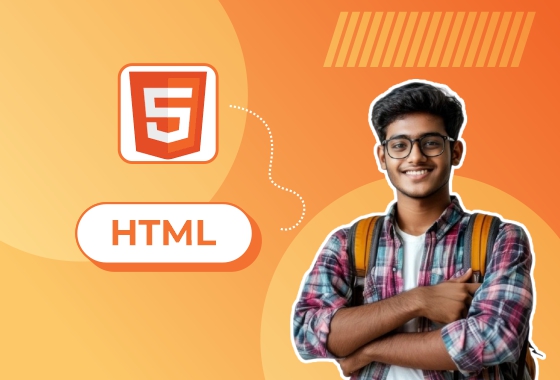
Mental Health Support Website
Project Title:
Mental Health Support Website
Objective:
To create an informative and supportive website focused on mental health. The site will provide resources, educational content, self-help tools, and professional support for individuals looking for mental health guidance.
Key Features:
Home Page
An inviting and calming design to make users feel safe and welcomed.
Brief introduction to mental health, explaining the importance of seeking support.
Links to key resources, such as self-help tools, articles, and professional services.
Mental Health Resources
Articles and educational content about various mental health issues, such as anxiety, depression, stress management, etc.
Information on coping strategies, mindfulness techniques, and self-care practices.
Videos or podcasts on mental health topics for deeper learning and understanding.
Self-Help Tools
Interactive tools like mood trackers, gratitude journals, and self-assessment quizzes to help users gauge their mental well-being.
A calming music player or guided meditation audio to promote relaxation.
A stress-relief tool, like breathing exercises, for immediate help in distressing situations.
Professional Support
Contact information for local therapists, counselors, and mental health hotlines.
Links to virtual support groups or online therapy platforms.
Emergency contacts for users who need immediate help, including suicide prevention helplines.
Community and Support Forums
Discussion forums or chat groups where users can share their experiences and support each other (optional and depending on the platform's approach to privacy and safety).
Guidelines for using forums safely, ensuring users feel comfortable sharing personal experiences.
Mental Health Tips and Advice
A blog section where professionals or contributors share tips, coping strategies, and ways to deal with mental health challenges.
Daily mental health tips displayed on the homepage or as pop-up notifications.
Interactive Features
Contact forms for users to reach out for further assistance or ask questions anonymously.
Newsletter sign-up for regular mental health tips, resources, and updates.
Responsive Design
The website will be fully responsive, ensuring it looks good and is easy to use on mobile, tablet, and desktop devices. This is essential for users who may need help on the go.
Technology Stack:
Frontend:
- HTML: The structure of the website, including text content, images, forms, and interactive elements like buttons and navigation.
- CSS: Styling for the website, including layout, typography, and colors. Use calming and soothing colors (e.g., blue, green, pastel tones) to create a safe and supportive atmosphere.
- JavaScript: Optional, but useful for interactive features such as the mood tracker, quizzes, and a calming music player. JavaScript can also be used to create simple animations or transitions to make the website feel more dynamic.
- Optional Backend (for more advanced features):
- Node.js with Express.js for handling contact form submissions or user registrations (if you want to add more interactive features like personalized dashboards).
- Firebase or MongoDB for storing user data (e.g., mood tracking data, quiz results) and providing a secure login system for personalized features.
Benefits:
- Accessible Support: Provides users with easy access to mental health resources and support, especially for those who might feel uncomfortable seeking help in person.
- Safe and Supportive Environment: The website creates a safe space for individuals to explore mental health topics and access helpful resources anonymously.
- Self-help Tools: Encourages self-awareness and self-care, allowing users to track their mood and use interactive tools for stress relief or emotional regulation.
- Professional Guidance: Links users to professional therapists and helplines, ensuring that users can find the help they need when they’re ready.
Potential Enhancements:
- Personalized Dashboard:
- Users could sign up for an account to track their mood, access personalized resources, and save articles or tools they find helpful.
- Live Chat Support:
- A chatbot or live chat feature could help users get immediate answers to questions about mental health or direct them to appropriate resources.
- Online Counseling:
- Integrate telehealth platforms where users can schedule online therapy sessions with licensed professionals.
- Progress Tracking:
- Allow users to track their mental health progress over time (e.g., tracking improvements in mood or anxiety levels with daily entries).
- Language Accessibility:
- Offer the website in multiple languages to ensure accessibility for a wider audience, particularly for international users.
- Interactive Workshops:
- Create a space for virtual workshops on topics like stress management, mindfulness, or resilience training, hosted by mental health professionals.
Example Structure of the Website:
1.Home Page:
A calming header with an introduction to mental health and a call-to-action to explore the resources.
Quick links to self-help tools, articles, and professional support.
Featured blog posts or latest news on mental health.
2.Resources Page:
List of articles and videos categorized by topic (e.g., stress management, coping with anxiety, understanding depression).
Search functionality to find specific resources.
3.Self-Help Tools Page:
Interactive tools such as a mood tracker and self-assessment quizzes.
A stress-relief audio player or meditation videos.
4.Contact/Support Page:
Contact form for users to reach out.
Information on how to access professional help (e.g., links to online therapy, local hotlines).
5.Blog/News Page:
Mental health tips, advice, and personal stories shared by professionals or contributors.
Opportunity for users to sign up for a newsletter.
Example Flow of Usage:
1.Landing on the Website:
Users arrive on a calm and welcoming homepage that introduces the purpose of the site and provides options to explore resources, take self-assessment quizzes, or find professional help.
2.Exploring Resources:
Users browse educational content to learn more about specific mental health issues, such as coping with anxiety or managing stress.
3.Using Self-Help Tools:
Users engage with mood trackers or listen to calming music to reduce stress and reflect on their emotions.
4.Contacting Professional Support:
If the user needs further help, they can visit the contact page to find professional mental health resources like hotlines, therapy platforms, and virtual support groups.





